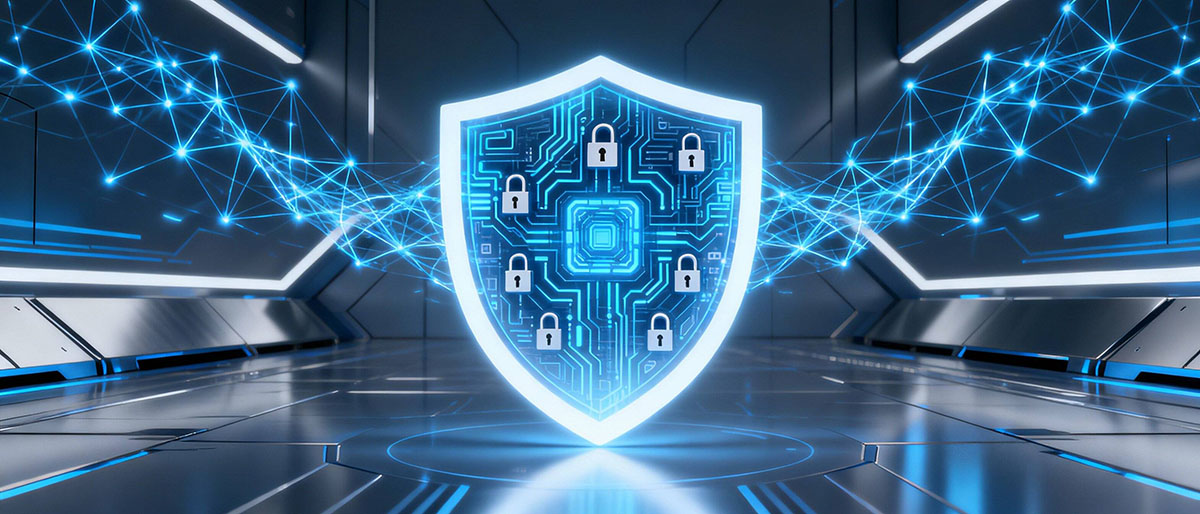Securing AI Systems: A Comprehensive Guide to Modern Threats

Introduction
Artificial Intelligence security has reached a pivotal moment. Reports from Microsoft and OpenAI highlight that cyber threats are increasingly AI-driven, while the Model Context Protocol (MCP) continues to mature as a foundational standard for secure AI interoperability. This post explores urgent developments shaping both the threat landscape and the framework implementations that aim to protect against them.
Understanding the AI Threat Landscape
AI-Powered Attacks Surge
According to Microsoft’s 2025 Digital Defense Report, systems now process over 100 trillion security signals daily, underscoring the explosive growth of AI-driven cyber operations. Attackers are automating phishing at scale, discovering vulnerabilities faster than patch cycles allow, and deploying adaptive malware capable of learning in real-time. Notably, identity compromise remains the top attack vector, driven by infostealers and uneven MFA adoption.
Malicious Use of Generative AI
OpenAI’s October 2025 report highlighted new patterns in AI misuse — from automated influence operations to malicious content generation. The study shared over 40 disrupted networks that used AI for scams, covert operations, and disinformation campaigns. Enforcement actions now include banning violating accounts and sharing insights with cybersecurity partners to harden the ecosystem.
Social Engineering Amplified by AI
Worcester Polytechnic Institute’s “Secure IT October 2025” bulletin emphasized how generative AI is supercharging social engineering. Attackers are crafting hyper-personalized phishing emails and deepfake audio impersonations that bypass traditional defenses during business communications.
MCP Advancements and Secure Implementations
The Rise of MCP as a Security Backbone
The Model Context Protocol (MCP) has emerged as a core standard for structured, context-aware interoperability between AI systems. A recent roadmap published by Knit emphasizes OAuth 2.1 integration, enterprise SSO support, and verification mechanisms for MCP servers—enhancing authentication and trust in distributed AI environments.
Upcoming updates (set for release Nov 25, 2025) introduce formal governance structures and the MCP Registry, an open index to verify and discover compliant MCP servers securely. This governance ensures consistent standards while decentralizing authority among working groups.
Practical Use Cases
MarkTechPost recently showcased real-world MCP implementations enabling dynamic AI systems that can securely integrate tools and resources in real time without exposing sensitive credentials. These architectures support permission-aware context exchange — critical to preventing cross-domain data leakage or unauthorized model invocation.
Modern Defensive Strategies
Defensive AI and Continuous Monitoring
Enterprise defenders are leveraging AI not just as a target but as a shield. Google and Microsoft have embedded continuous anomaly detection and adaptive learning into their cloud defense suites. These tools detect drift from training distributions, automatically flag unusual model outputs, and cross-correlate telemetry across global endpoints.
Secure Access Controls and Authentication
New standards such as OAuth 2.1 and W3C DID-based schemes in MCP demonstrate the transition from static API keys to dynamic, consent-driven authentication. This evolution dramatically reduces credential replay risks and simplifies enterprise compliance workflows.
Supply Chain and API Security
AI models are often exposed through APIs that lack rate limiting or auditing. Recent studies show over 57% of AI APIs remain externally accessible, creating openings for prompt injection, poisoning, and model theft. Robust API security now incorporates zero-trust designs, behavioral fingerprinting, and granular request gating.
The Path Forward
AI systems have become both defenders and targets. Emerging AI security frameworks—NIST AI RMF, OWASP ML Security Top 10, and MITRE ATLAS—are formalizing best practices for securing AI pipelines. Meanwhile, MCP’s evolution into a verifiable, context-governed protocol marks a key step toward trustworthy and secure agentic AI ecosystems.
The coming months, especially following the MCP RC launch in November, will reshape how organizations design and deploy secure multi-agent systems. Continuous vigilance, standards adoption, and proactive testing remain the cornerstones of resilient AI security programs.
References and Further Reading
- Microsoft Digital Defense Report — AI attacks surge as systems process 100 trillion signals daily (Infosecurity Magazine, Oct 2025) https://www.infosecurity-magazine.com/news/microsoft-process-100-trillion
- OpenAI Global Affairs — Disrupting Malicious Uses of AI (October 2025) https://openai.com/global-affairs/disrupting-malicious-uses-of-ai-october-2025/
- Knit.dev — The Future of MCP: Roadmap, Enhancements, and What’s Next https://www.getknit.dev/blog/the-future-of-mcp-roadmap-enhancements-and-whats-next
- Model Context Protocol Info — Update on the Next MCP Protocol Release https://modelcontextprotocol.info/blog/mcp-next-version-update/
- MarkTechPost — Dynamic AI Systems with Model Context Protocol https://www.marktechpost.com/2025/10/19/an-implementation-to-build-dynamic-ai-systems-with-the-model-context-protocol-mcp-for-real-time-resource-and-tool-integration/
- WPI — Artificial Intelligence: SECURE IT October 2025 https://www.wpi.edu/news/announcements/artificial-intelligence-secure-it-october-2025
- Google Cloud — AI-Powered Security Features for October https://www.techbuzz.ai/articles/google-unveils-ai-powered-security-features-for-october
- BlackFog — Understanding the Biggest AI Security Vulnerabilities of 2025 https://www.blackfog.com/understanding-the-biggest-ai-security-vulnerabilities-of-2025/